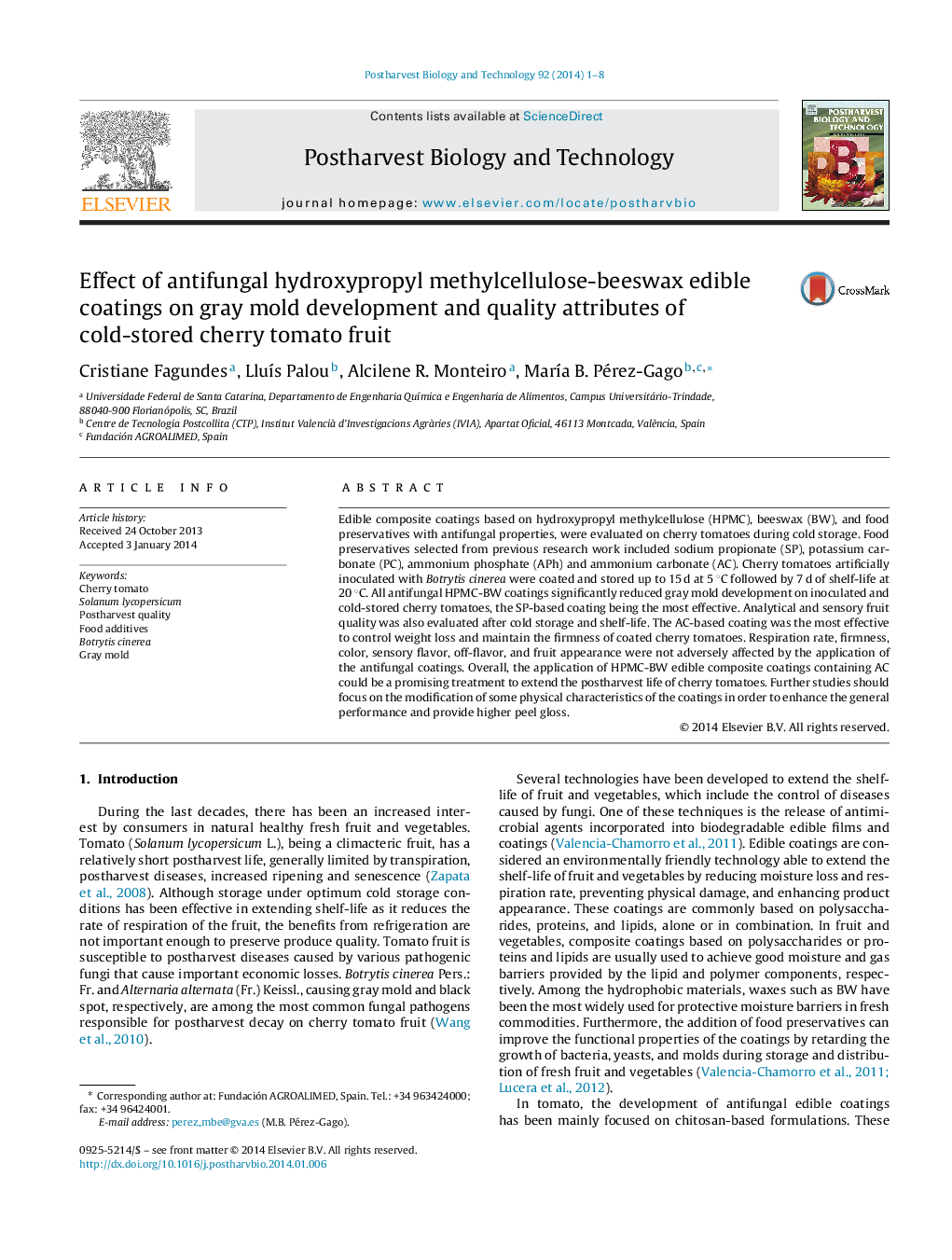| Article ID | Journal | Published Year | Pages | File Type |
|---|---|---|---|---|
| 4518208 | Postharvest Biology and Technology | 2014 | 8 Pages |
•HPMC-BW coatings with antifungal food additives were tested on cherry tomatoes during cold storage.•Coatings with sodium propionate were the most effective to control gray mold caused by Botrytis cinerea.•None of the coatings affected negatively the quality of cherry tomatoes.•Overall, coatings with ammonium carbonate showed the best performance to extend tomato postharvest life.
Edible composite coatings based on hydroxypropyl methylcellulose (HPMC), beeswax (BW), and food preservatives with antifungal properties, were evaluated on cherry tomatoes during cold storage. Food preservatives selected from previous research work included sodium propionate (SP), potassium carbonate (PC), ammonium phosphate (APh) and ammonium carbonate (AC). Cherry tomatoes artificially inoculated with Botrytis cinerea were coated and stored up to 15 d at 5 °C followed by 7 d of shelf-life at 20 °C. All antifungal HPMC-BW coatings significantly reduced gray mold development on inoculated and cold-stored cherry tomatoes, the SP-based coating being the most effective. Analytical and sensory fruit quality was also evaluated after cold storage and shelf-life. The AC-based coating was the most effective to control weight loss and maintain the firmness of coated cherry tomatoes. Respiration rate, firmness, color, sensory flavor, off-flavor, and fruit appearance were not adversely affected by the application of the antifungal coatings. Overall, the application of HPMC-BW edible composite coatings containing AC could be a promising treatment to extend the postharvest life of cherry tomatoes. Further studies should focus on the modification of some physical characteristics of the coatings in order to enhance the general performance and provide higher peel gloss.
